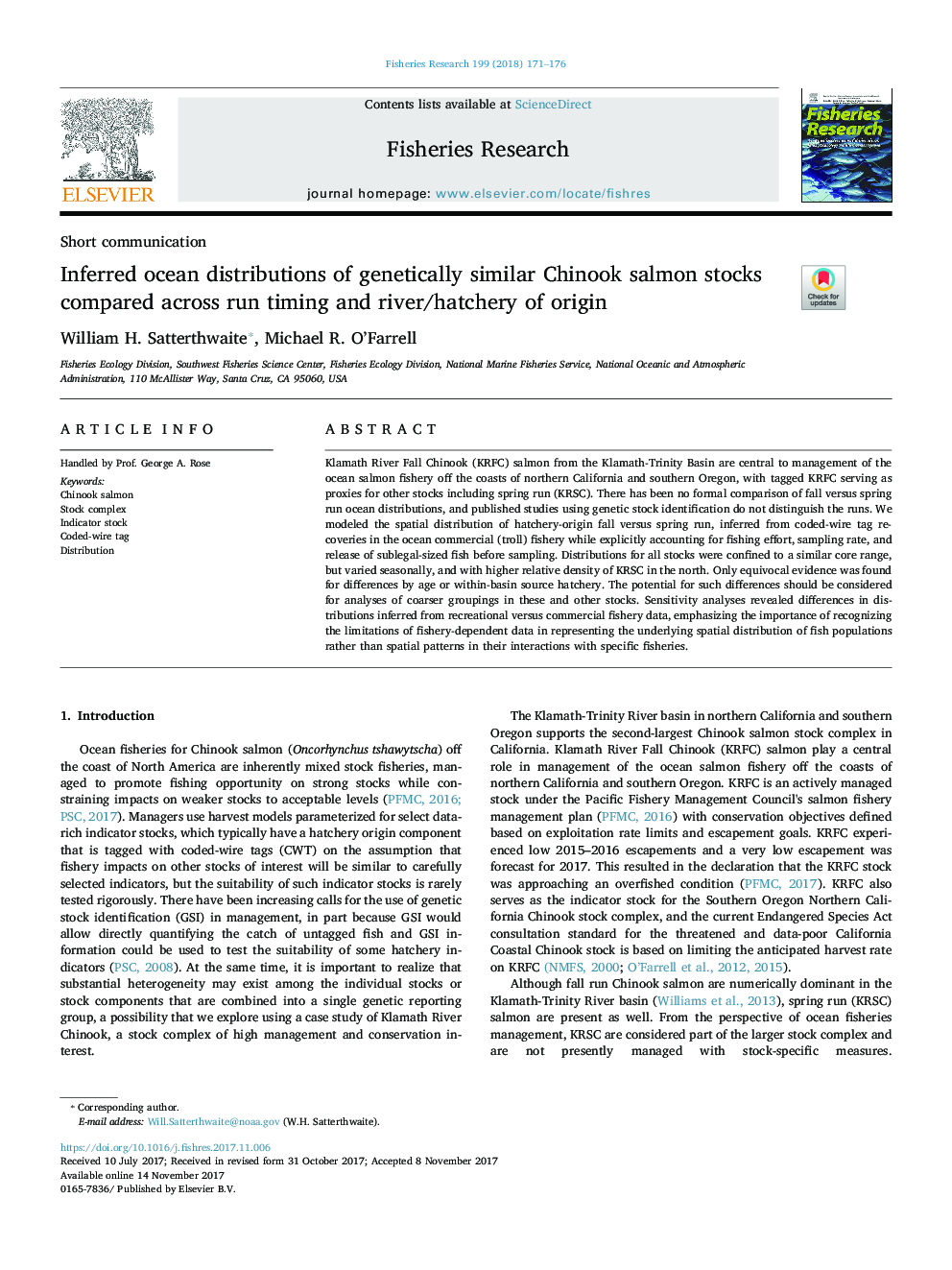| Article ID | Journal | Published Year | Pages | File Type |
|---|---|---|---|---|
| 8885558 | Fisheries Research | 2018 | 6 Pages |
Abstract
Klamath River Fall Chinook (KRFC) salmon from the Klamath-Trinity Basin are central to management of the ocean salmon fishery off the coasts of northern California and southern Oregon, with tagged KRFC serving as proxies for other stocks including spring run (KRSC). There has been no formal comparison of fall versus spring run ocean distributions, and published studies using genetic stock identification do not distinguish the runs. We modeled the spatial distribution of hatchery-origin fall versus spring run, inferred from coded-wire tag recoveries in the ocean commercial (troll) fishery while explicitly accounting for fishing effort, sampling rate, and release of sublegal-sized fish before sampling. Distributions for all stocks were confined to a similar core range, but varied seasonally, and with higher relative density of KRSC in the north. Only equivocal evidence was found for differences by age or within-basin source hatchery. The potential for such differences should be considered for analyses of coarser groupings in these and other stocks. Sensitivity analyses revealed differences in distributions inferred from recreational versus commercial fishery data, emphasizing the importance of recognizing the limitations of fishery-dependent data in representing the underlying spatial distribution of fish populations rather than spatial patterns in their interactions with specific fisheries.
Keywords
Related Topics
Life Sciences
Agricultural and Biological Sciences
Aquatic Science
Authors
William H. Satterthwaite, Michael R. O'Farrell,
